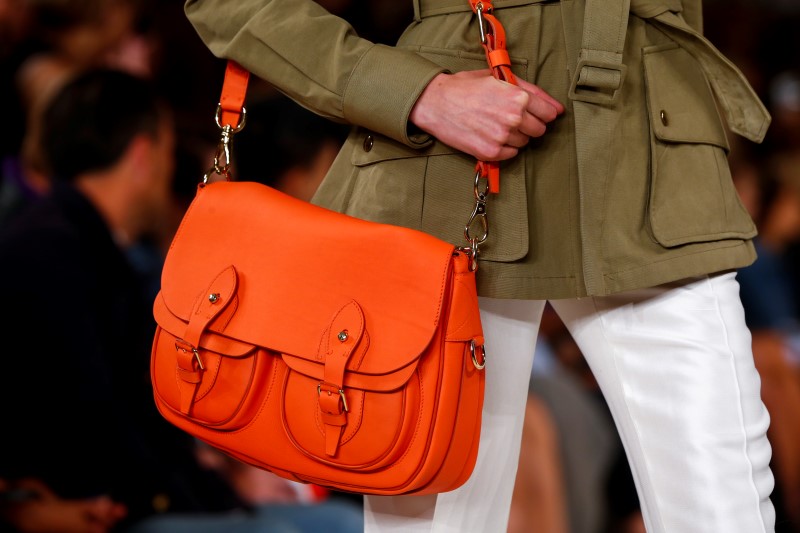Bank CEOs meet with Trump to discuss Fannie Mae and Freddie Mac - Bloomberg
On Wednesday, Guggenheim maintained a Buy rating on Ralph Lauren stock (NYSE:RL) and increased its price target to $285 from the previous $260. The stock, currently trading at $258.29, has shown remarkable momentum with an 80% return over the past year according to InvestingPro data. The firm’s analysts highlighted the brand’s substantial investment in marketing and advertising over the past seven years, which they believe has positively impacted both the company’s sales and operating margins. InvestingPro analysis suggests the stock is slightly overvalued at current levels.
Ralph Lauren’s marketing spend, which is estimated at around 7% of sales or approximately $480 million in the fiscal year 2025, compared to 4% of sales or $273 million in fiscal year 2019, has been a significant factor in the brand’s growth strategy. With impressive gross profit margins of 67.5% and strong financial health metrics according to InvestingPro, the company’s strategy appears to be paying off. Guggenheim analysts expect sales to grow by approximately 9% and operating margin to expand by around 210 basis points this year, relative to fiscal year 2019 levels.
Despite anticipating a reduction in marketing expenses in the second half of the fiscal year 2025, with a projected 10% year-over-year dollar decline and a 9% decrease compared to the first half of fiscal year 2025, the analysts foresee marketing spend as a percentage of sales to align with the previous year’s levels. Notably, Ralph Lauren allocated about 9% of its second-quarter sales to various activations, including the Spring 2025 Runway Show and major sports sponsorships, which were deemed highly beneficial for the brand’s image.
Guggenheim’s analysis suggests that Ralph Lauren’s management team has been effective in elevating the brand and attracting new customers, as well as taking strategic actions to drive long-term growth across all channels and regions. The firm believes that the company may continue to prioritize market share expansion through consistent advertising investments, potentially at the expense of short-term profitability.
In light of the ongoing momentum, Guggenheim has reiterated its earnings per share (EPS) estimates for Ralph Lauren at $11.60 for fiscal year 2025 and $13.00 for fiscal year 2026. The revised price target of $285 reflects the analysts’ confidence in the brand’s trajectory and sustained investment in its marketing initiatives. With the next earnings report due on February 6, 2025, investors can access comprehensive analysis and 14 additional key insights through InvestingPro’s detailed research reports.
In other recent news, Ralph Lauren has been in the spotlight with various analysts adjusting their outlook on the company’s shares. Citi has raised the price target for Ralph Lauren to $255, anticipating the company’s third-quarter earnings per share to surpass both the consensus estimate and the company’s own guidance. The company’s sales are projected to rise by 4.9%, partly due to strong direct-to-consumer sales globally.
However, Raymond (NSE:RYMD) James downgraded Ralph Lauren’s stock rating from "Outperform" to "Market Perform," citing concerns about changes to foreign exchange rates potentially impacting financial performance. Jefferies raised its price target for Ralph Lauren to $280, noting consistent sales growth and a double-digit earnings per share algorithm. Argus initiated a Buy rating on Ralph Lauren shares, setting a 12-month price target of $250.
Ralph Lauren’s recent financial performance demonstrated a 6% revenue growth and a rise in direct-to-consumer sales. Despite a 7% increase in operating expenses due to marketing investments, Ralph Lauren’s adjusted gross margins improved to 67.1%. The company has also revised its full-year revenue outlook to a growth range of 3% to 4%.
Lastly, Bernstein analysts noted a strong start to the holiday quarter for the U.S. Apparel & Specialty Retail sector, including Ralph Lauren. This positive start has been attributed to a later than expected drop in temperatures and a recovery in spending among higher-income U.S. consumers.
This article was generated with the support of AI and reviewed by an editor. For more information see our T&C.
